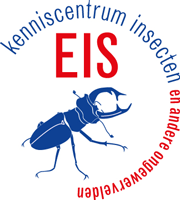| Vestigingsstatus |
In gevangenschap/gecultiveerd |
|
| Zeldzaamheid |
Algemeen |
|
| Invasiviteit |
Niet invasief |
|
| Invasiviteit (toelichting) |
Settles in buildings and may form colonies that are hard to eradicate. Does not occur outside and has no influence on the autochtonous species. |
|
| Type introductie |
Niet opzettelijk |
|
| Jaar van eerste introductie |
1850 - 1886 |
|
| Jaar van eerste melding |
1886 |
|
| Natuurlijke verspreiding |
Afrika |
|
| Verspreiding in Nederland |
Drenthe |
|
Friesland |
|
Gelderland |
|
Groningen |
|
Limburg |
|
Noord-Brabant |
|
Noord-Holland |
|
Overijssel |
|
Utrecht |
|
Zuid-Holland |
|
Zeeland |
|
| Verspreiding in Nederland (toelichting) |
Occured ca. 100 years ago in al major cities in bakeries and other buildings that were heathed. Currently the ant is controled better, and it is not as common as before. |
|
| Habitats |
Onder menselijk beheer |
|
| Wijze van introductie |
Contaminant voedsel |
|
Transport van habitatmateriaal (grond, vegetatie, hout) |
|
Container/bulk, inclusief zee-, lucht- en treinvracht |
|
Machines/apparatuur |
|
Mensen en hun bagage/uitrusting |
|
Onwetend bezit |
|
| Impact |
Volksgezondheid |
|
Sociaal-economisch |
|
| Ecologische impact (toelichting) |
No ecological impact, because the species cannot occur outdoor. |
|
| Economische impact (toelichting) |
The control or eradiction can only be done by professionals and is very expensive, because sometimes the ants has spread to several houses or complete building blocks. |
|

